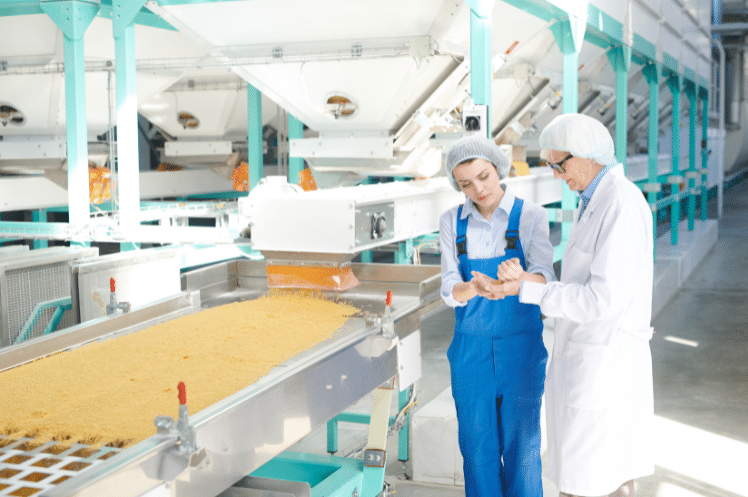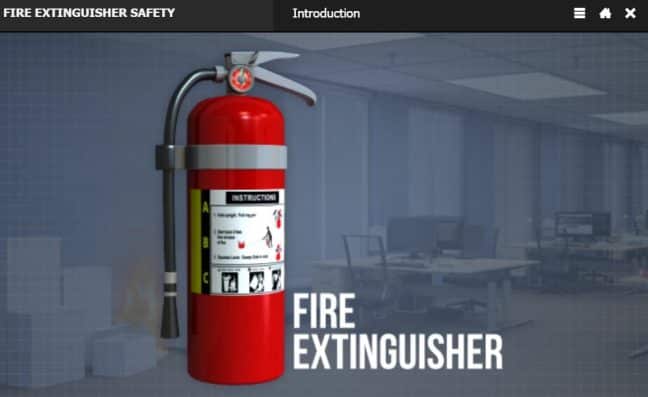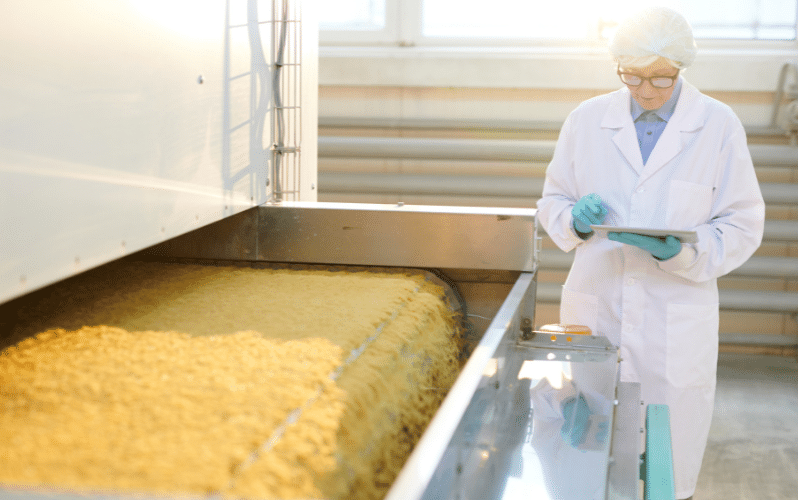May 6, 2024 5 min read

What You Need to Know About Good Manufacturing Practices in Food Safety
Industry:
Solution:

For those in the food manufacturing sector, understanding and implementing Good Manufacturing Practices (GMP) is not just about regulatory compliance; it’s about cultivating a culture of quality that enhances safety, efficiency, and your brand’s integrity. Here’s a deep dive into the essentials of Good Manufacturing Practices in food safety, designed to equip food industry employees with the knowledge and tools to excel.
What are Good Manufacturing Practices (GMP) in Food Safety?
Established in 1969 by the Food and Drug Administration (FDA) in the United States, Good Manufacturing Practices (GMPs) define the necessary methods, equipment, facilities, and controls for producing processed food. Serving as the basic sanitary and processing standards essential for ensuring the production of safe and wholesome food, GMPs are a critical element of regulatory oversight concerning the safety of the nation’s food supply.
Additionally, GMPs provide a fundamental measure for FDA inspections. More than just a set of guidelines, GMP represents a holistic approach that encompasses every facet of the manufacturing process—from procuring raw materials to distributing the final product—guaranteeing both safety and consistency throughout all stages of production.
What is the Difference Between GMP and cGMP?
While GMP stands for Good Manufacturing Practices, cGMP stands for Current Good Manufacturing Practices. Both are vital for ensuring product safety and quality, though they differ significantly in focus and requirements, but there are differences:
- Good Manufacturing Practices (GMP) are fundamental guidelines for manufacturing practice, covering personnel hygiene, facility conditions, and equipment maintenance, allowing adaptation to specific operational needs while maintaining safety and quality.
- Current Good Manufacturing Practices (cGMP) elevates GMP standards by emphasizing the need for ongoing compliance with the latest industry advancements and best practices from design to distribution, with continuous updates as new technologies emerge. cGMP standards are stringent and crucial in sectors like pharmaceuticals, demanding modern standards. Rigorous monitoring of compliance with cGMP can lead to severe penalties for non-compliance, such as product recalls and legal action, underscoring the importance of adherence in critical industries.
Online Industrial Manufacturing Training Libraries
Unlock success in industrial workplaces with online training courses. Master topics like Current Good Manufacturing Practices, facilities maintenance, operator responsibilities, and more.
Explore Courses
What are the 5 Main Components of GMP?
Good Manufacturing Practices in food safety consist of five components (officially called subparts by the FDA), with two additional subparts reserved for future use. These are guidelines that are intentionally generalized to allow manufacturers flexibility in implementation while ensuring food safety across various operations.
- People. The cornerstone of any successful GMP program is its people. Food companies must prioritize ongoing training to ensure all team members and managers are proficient in GMP quality control standards. Utilizing an Learning Management System (LMS) can enhance this training by offering scalable and consistent eLearning courses that are easily updated with the latest standards. An LMS also allows for tracking of training progress and compliance, ensuring that educational methods are current and effective across the entire organization.
- Premises. A clean, safe production environment is essential in food manufacturing, where the risk of product contamination is high. Facilities should be designed to enable effective sanitation and minimize the risk of cross-contamination. This extends to equipment as well, which must be regularly validated, calibrated, and maintained according to strict schedules and records to ensure safety.
- Processes/Paperwork. Documentation is a critical component of GMP, serving as proof that procedures are being followed correctly. Auditors use this documentation to verify that GMP standards are maintained throughout the facility. Moving away from traditional paper records and adopting digital solutions, such as plant management software, can streamline this process. Digital tools provide easy access to necessary documents, simplify record sign-offs, and enhance the efficiency of food safety checks and recordkeeping.
- Products & Primary Materials. Quality control starts with the careful inspection of primary materials. Failure to properly inspect these ingredients can lead to unsafe products reaching the market. Effective GMPs must include strategies to monitor and manage deviations in incoming materials to ensure the safety and quality of the final products, which are distributed to retailers, restaurants, and ultimately, consumers.
- Procedures. Procedures are the backbone of GMP compliance, requiring meticulous analysis, regular updates, and effective implementation. Detailed documentation of these procedures ensures that any issues can be swiftly traced back to their origins through methods such as root cause analysis, allowing for quick resolution and continuous improvement.

The Importance of Embracing Good Manufacturing Practices in Food Safety
Because consumers often cannot determine the safety of food products by appearance alone, manufacturers carry the critical responsibility of ensuring their goods are safe and of high quality. By following GMPs, manufacturers uphold and promote quality, increasing the safety of products for widespread distribution. This diligence helps ensure that products are free from harmful contaminants, safeguarding consumer health.
GMPs offer numerous benefits to food manufacturers, enhancing both product safety and business efficiency:
- Preventing Foodborne Illness: GMPs are essential in minimizing the risk of contamination, helping to prevent foodborne illnesses.
- Reducing Product Recalls: By identifying and addressing potential hazards early, GMPs can significantly decrease the likelihood of product recalls.
- Improving Customer Satisfaction: Implementing GMPs ensures that food products meet high standards of safety and quality, thereby improving customer satisfaction.
- Increasing Profits: Adherence to GMPs can reduce the financial risks associated with lawsuits and fines, ultimately boosting profits.
Why Choose Vector Solutions for Online Training?
Using Vector Solutions for your food and beverage manufacturing training needs ensures that your team is well-equipped with the latest skills and knowledge in industrial manufacturing.
As the industry standards evolve, so does the training provided by Vector Solutions. We are continuously adapting to offer the most current and effective methodologies for training.
“Vector Solutions has brought a training process to our company that is easy to follow, easy to maintain, and easy to track, making the program that much more powerful.”
This commitment to excellence not only helps safeguard public health but also enhances the quality of your food products, ultimately fostering a culture of safety and driving significant economic benefits for your organization.
Food Manufacturing Safety & Compliance Solutions
Remain compliant with industry regulations from GMP, OSHA, and more with our online courses and safety management solutions.
Request a Demo








